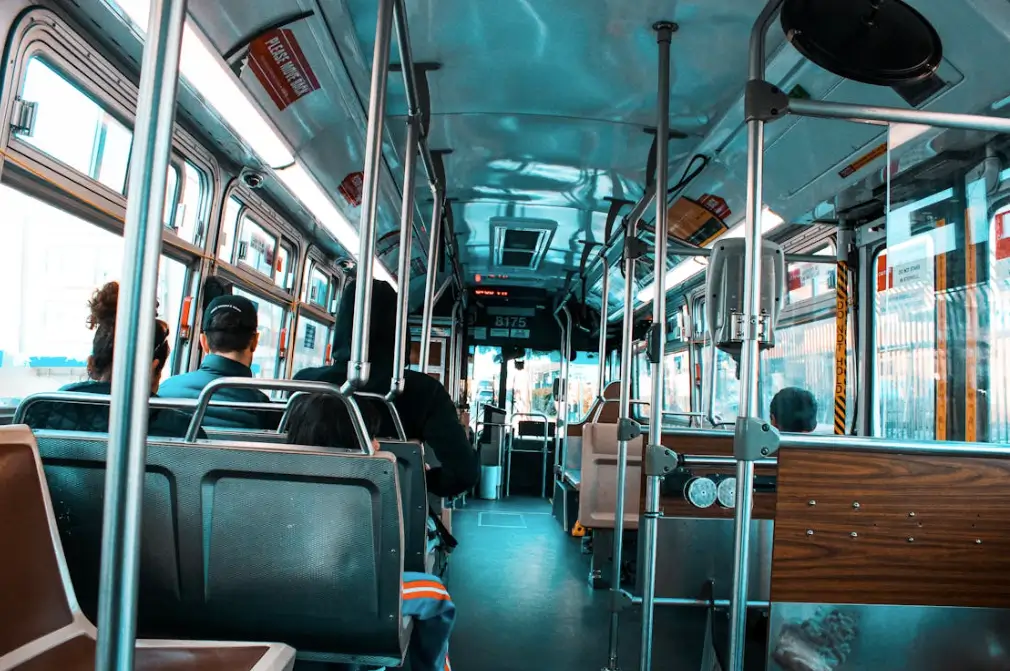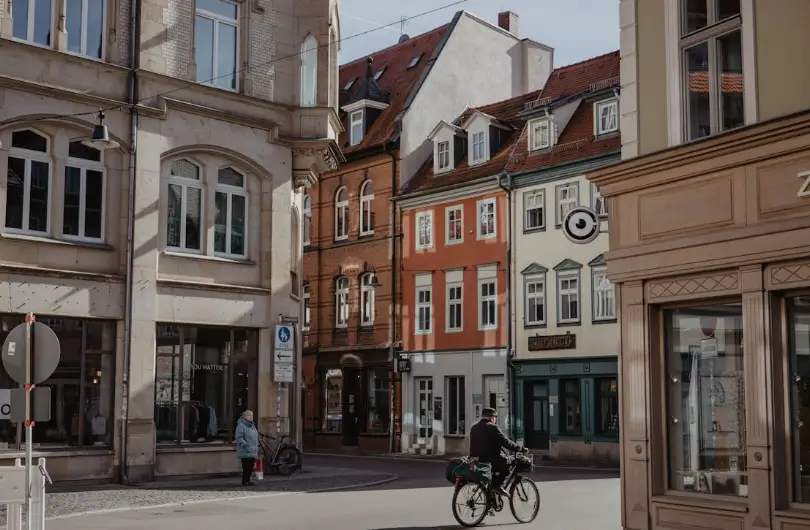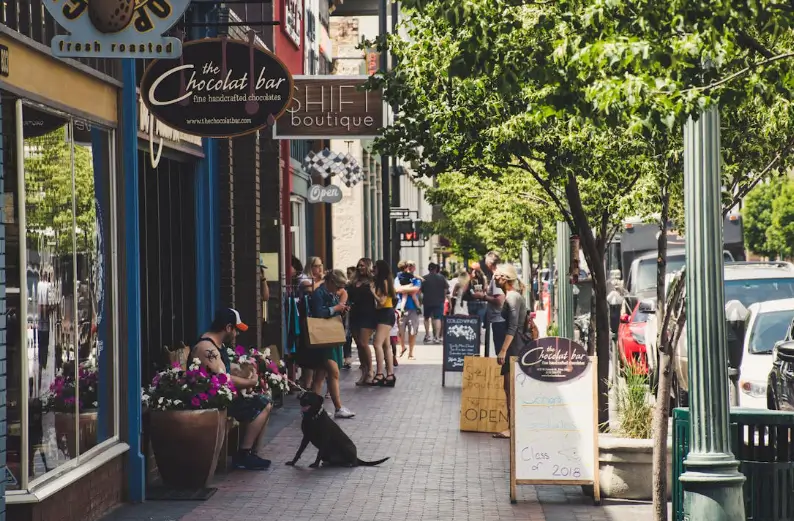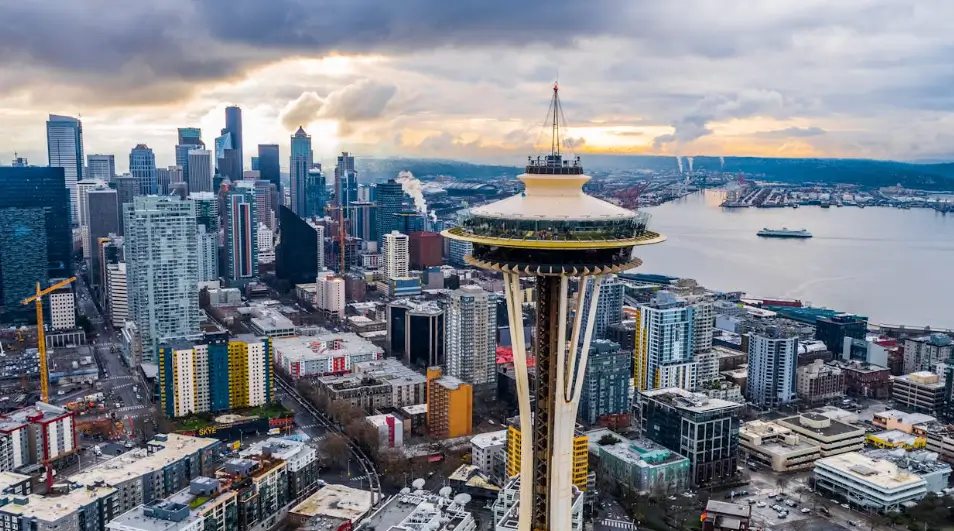Enter Ugly Transit
Car commercials have trained us well. Sleek curves, perfect lighting, glass roads, whisper-quiet engines, and you, behind the wheel, a movie hero. Cars sell you a vibe, a dream. They sell more than transportation, they sell identity.
Why doesn’t transit do the same? Why does taking the bus or train often feel like stepping into an afterthought? Dirty seats, flickering lights, broken air conditioning, there’s no sense of arrival or dignity. Transit is sold as necessity, not desire. Think Greyhound at 2 a.m., not a glossy BMW commercial.
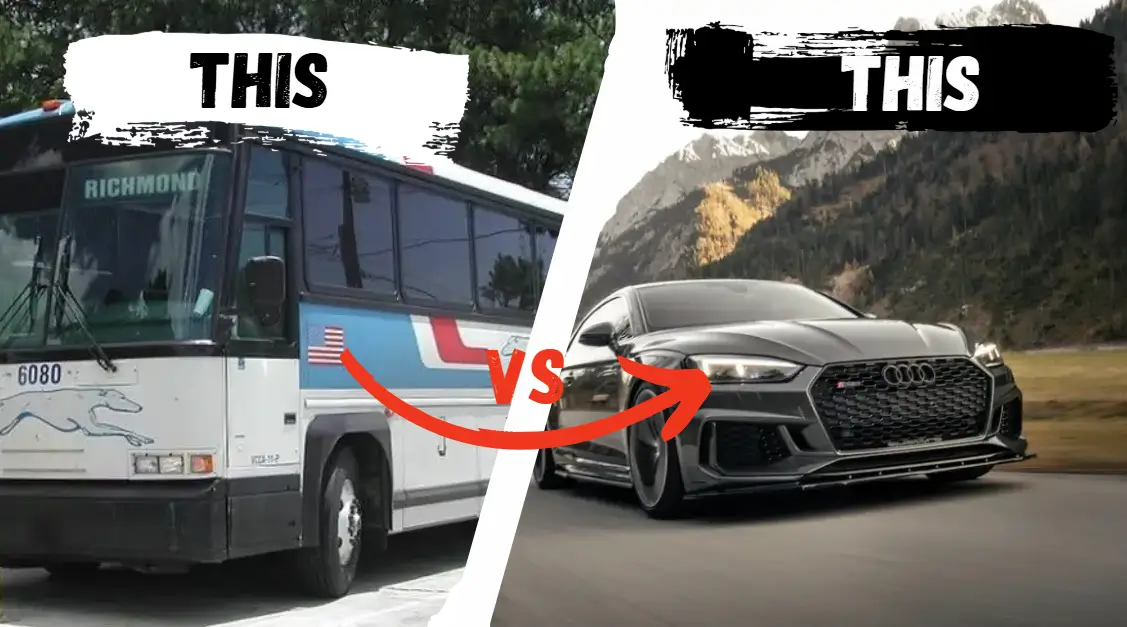
The Experience Gap: Cars vs. Transit
When you see a car ad, every detail is curated. Interior woodgrain, stitched leather, ambient lighting, panoramic sunroofs. Even the road itself is so scenic you wonder if they airbrushed the mountains.
Contrast that with transit. What do you usually see? Schedules. Timetables. A lonely bus stop with a cracked plastic bench. If we’re lucky, a stock photo of someone smiling like they just discovered air molecules. Rarely a warm interior, rarely a ride that feels like freedom.
That gap isn’t accidental. It’s design politics. We make cars look premium. We let buses look like rolling janitors’ closets. We let stations rot, benches wobble, and lighting scream “interrogation room.”

Design Neglect: When Ridership Isn’t Worth the Aesthetic
Too many transit vehicles are designed to last cheap, not feel good. Materials are scratch-resistant but also soul-resistant. Windows are too small. Lighting is harsh enough to remind you you’ve got pores. Noise levels? Think “tin can in a thunderstorm.”
Stations don’t help. Concrete boxes. Fluorescent buzz. Zero art. Zero landscaping. Zero pride. If a transit line is your identity, this is like showing up to prom in sweatpants.
Marketing Void: Selling Timetables, Not Journeys
We frame transit as a chore. “Catch the 5:45.” “Next train: 10 min.” It’s the energy of an Excel spreadsheet, not an adventure. Rarely do we tell the story of why people ride, connection, freedom, joy.
That’s why the parody video I found hit so hard. Sunshine breaking through clouds. Riders literally cheering as the bus arrives. People sprinting to hug their seats like they just reunited with a long-lost friend. A woman basking in imaginary wind like she’s in a shampoo commercial. Even the bus does doughnuts in an empty parking lot because, apparently, it can. It’s absurd...and it’s brilliant. Likewise, Amtrak has recently been leaning heavy on their ad campaign with hilarious shorts and imaginative visuals (and the new engine and cars don't hurt either). It proves that transit could be exciting if we bothered to make it look exciting.
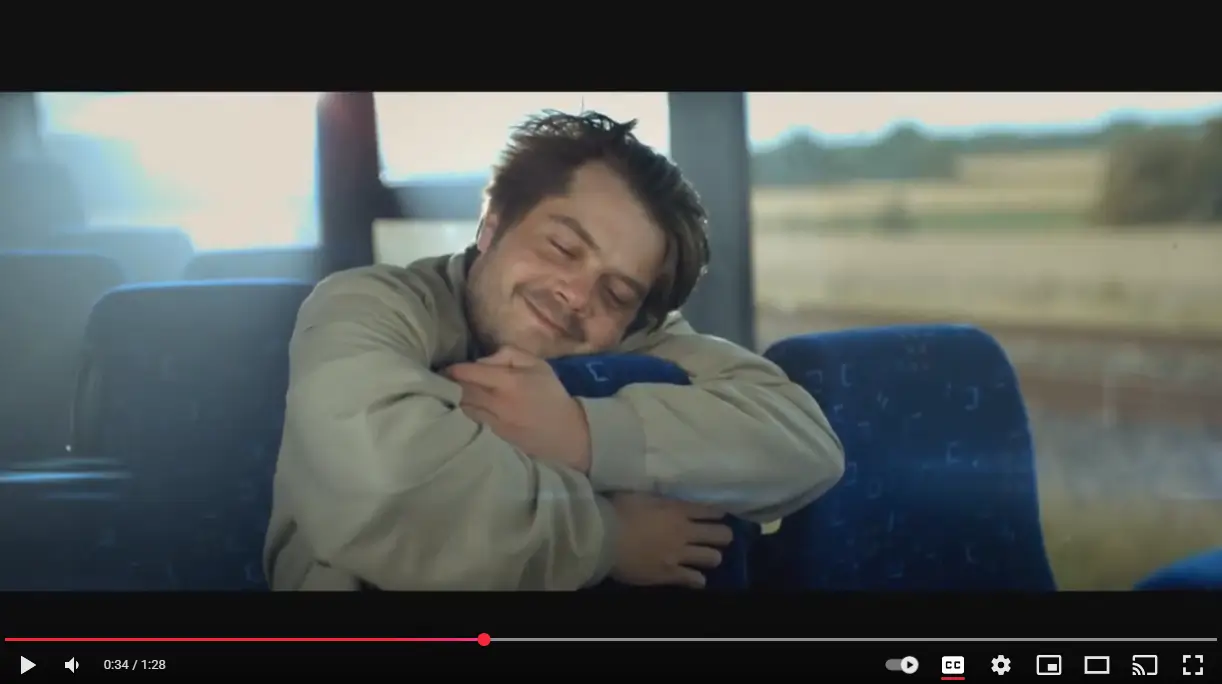
The Consequence: No One Wants to Take the Ride
When buses and trains are associated with grit, delay, inconvenience, people avoid them. And that undercuts every “transit first” policy. You can build the line, but if it feels like punishment, people will still default to cars.
When “bus” equals “sacrifice” and “drive” equals “luxury,” the fight is lost before it even starts.
What Transit Should Sell, Not Just Serve
If we want transit to compete, it has to be beautiful, comfortable, and aspirational. That means moving beyond bare-bones functionality and thinking about how the entire journey feels.
Interior design matters. Riders notice the details. Soft lighting can change the mood from sterile to inviting. Wide windows transform a boxy ride into a moving panorama of the city. And yes, seats that don’t look like a tetanus hazard send the message that comfort is part of the design, not an afterthought.
Stations as destinations. Imagine showing up at a stop that feels like a plaza, not a punishment. Add art, landscaping, shelter from sun and rain, things that communicate pride. If people post photos of their coffee shops and hotel lobbies, why shouldn’t they post from their train station too?
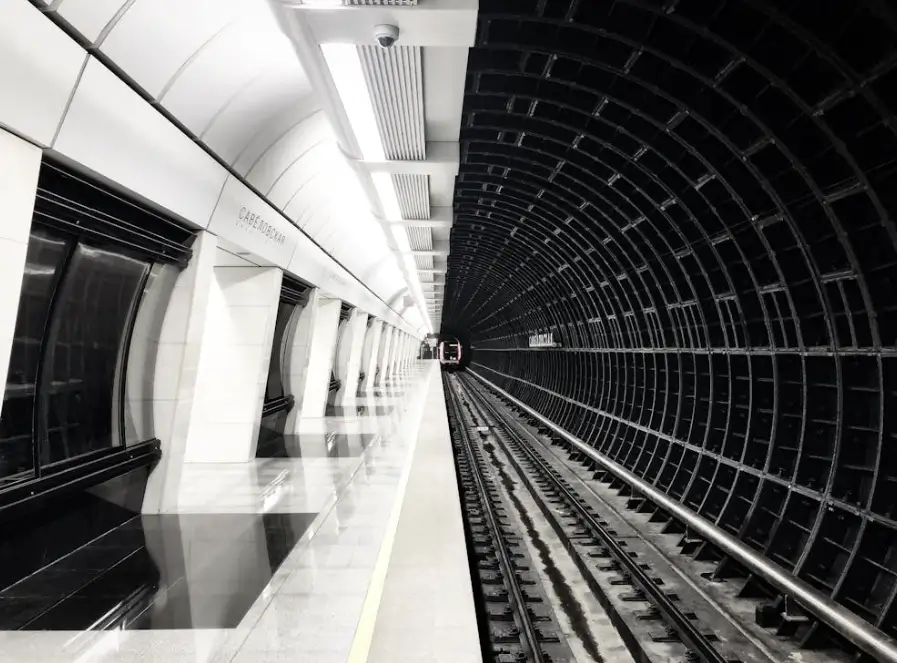
Narrative shifts. Transit should tell stories about connection, freedom, and belonging. Instead of hammering us with timetables, show what life looks like on the ride: friends talking, students reading, workers relaxing on the way home. A tagline like “Meet me on the train” sells an experience, not just a trip.
Consistency across modes. Whether it’s a bus, tram, or commuter rail, people should recognize it instantly and know it delivers the same quality. Branding, design language, and standards can create trust, if one line feels safe and comfortable, riders will expect the same across the whole system.
Show the future. Transit marketing shouldn’t shy away from ambition. The parody video proved it: a bus doing doughnuts, passengers hugging their seats, light breaking through clouds, it was ridiculous but visionary. If cars can sell lifestyle with leather seats and fantasy mountain drives, transit can sell dignity, community, and even joy with big windows and bold design.
But What About Cost?
Every time these ideas come up, the pushback is predictable: “But that’s too expensive.” Yet the truth is, we already spend billions making cars and highways look good, scenic interchanges, decorative bridges, polished car ads. The question isn’t whether we can afford beauty and dignity in transit, it’s whether we value riders enough to provide it. Investing in better design isn’t waste, it’s strategy. Comfortable, attractive systems build ridership, which in turn builds revenue and political support. The real expense is ignoring these upgrades and watching systems wither.
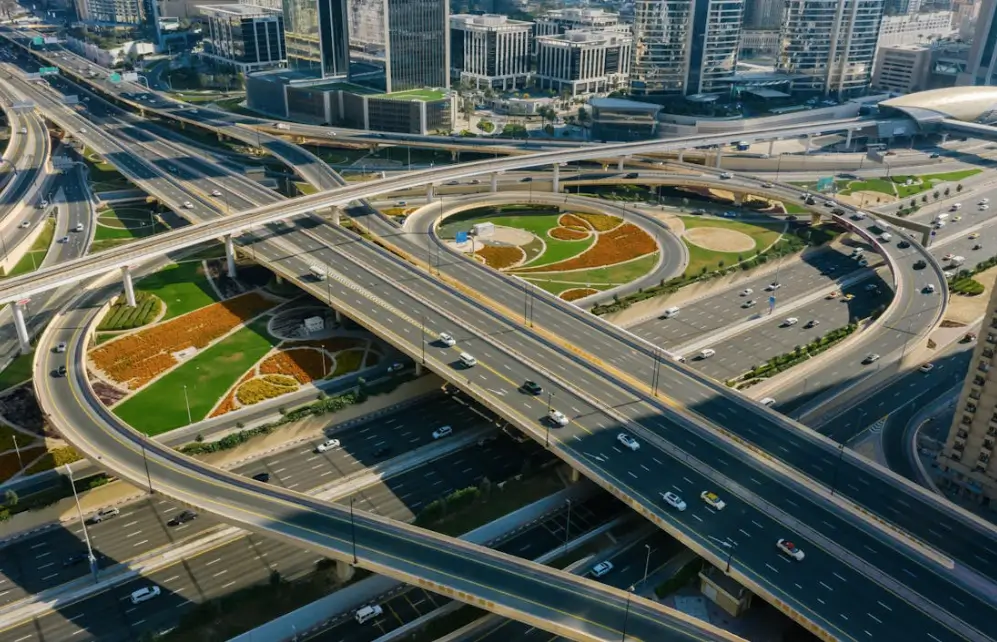
Closing Thought
One day, I hope transit will be sold like a car. Not because it’ll always beat cars on convenience, but because it competes on pride. Because boarding a bus should feel like stepping into your city’s living room, not an abandoned break room.
Let’s build systems we’re proud of. Let’s market them like dreams, not grudges.
%20(1200%20x%20237%20px)%20(300%20x%2059%20px).webp)
